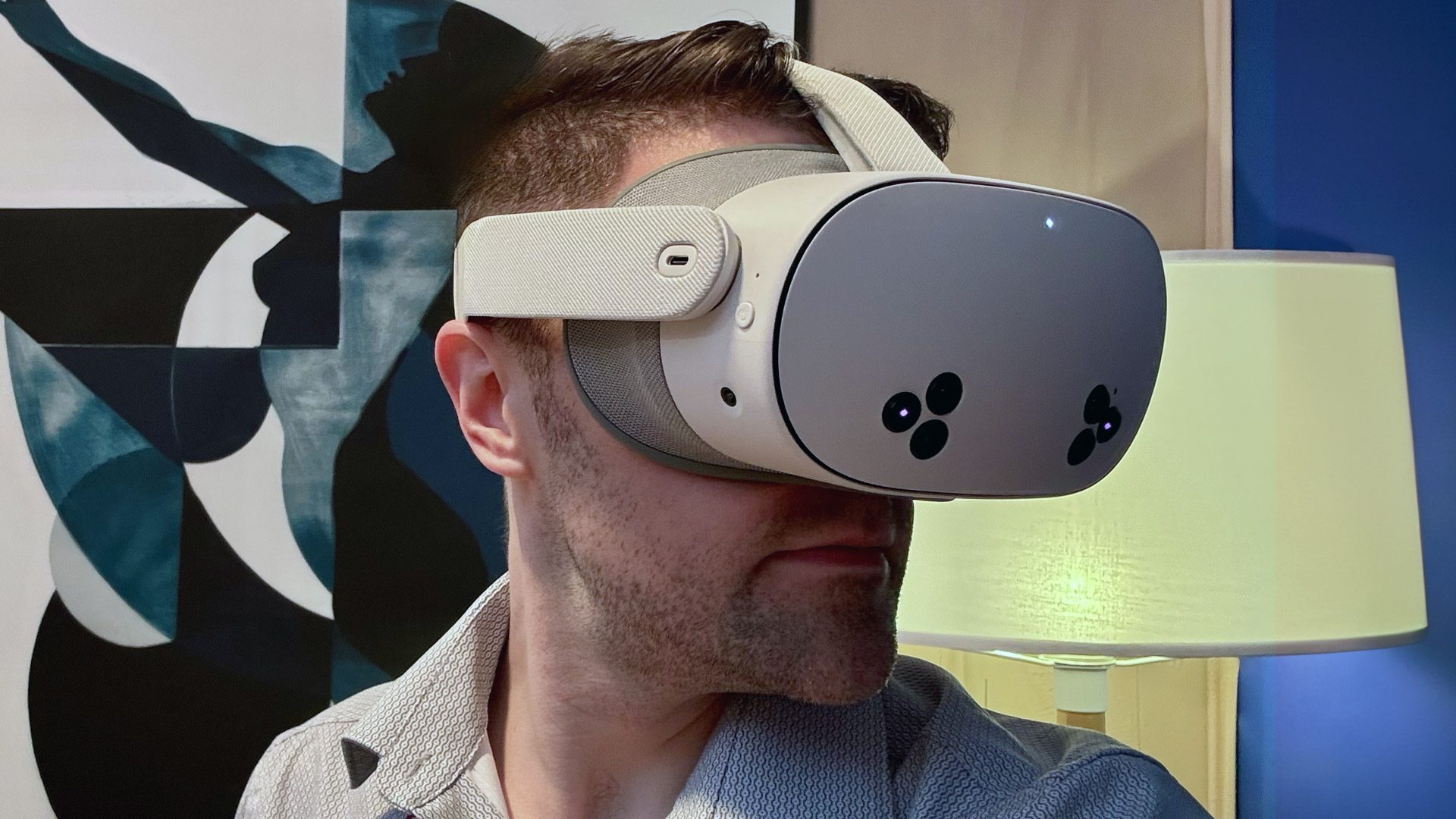Meta has finally revealed its latest headset, Quest 3S. Although it retains some of Quest 2’s flaws, it creates much needed parity in power and features, all at an unbeatable price.
Quest 3S has not only just been formally announced, it’s also right around the corner. Launching on October 15th, this $300 headset is the best place for VR newcomers to start. Check out the Quest 3S announcement details, including a full spec list here.
Quest 3S Visual Experience
As a VR power user who has the fortune of using the best headsets, putting on Quest 3S immediately made me feel like I’d taken a step back to the Quest 2. And for good reason—Quest 3S uses the same display and same lenses as Quest 2.
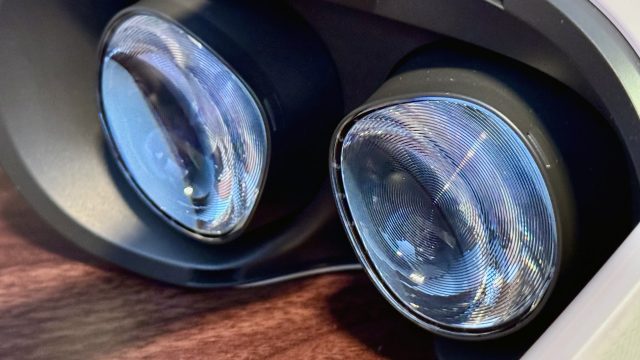
There’s no getting around the fact that the Fresnel lenses in Quest 2 (and now Quest 3S) are worse than the class-leading lenses in Quest 3. It’s not even so much the lower resolution, but mostly the glare and smaller sweet spot—which are almost completely absent on Quest 3—that are so visually reminiscent of Quest 2. These artifacts really impact the clarity of the image coming from the display.
Unfortunately this means that doing basic things in the Horizon OS interface—like navigating through your app library, browsing the web, and playing videos—will look nearly identical on Quest 3S as it does on Quest 2.
Performance
That’s a bummer, but there’s more to the overall visual experience than lenses and resolution—the performance under the hood has a lot to do with how good immersive experiences can look on the headset, and it’s here where Quest 3S has a big advantage over Quest 2.
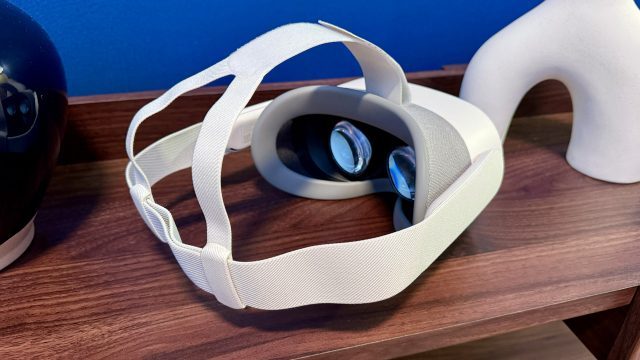
Quest 3S is equal in performance to Quest 3—it uses the same processor, same RAM, and it can play the same games with the same graphical settings. So you might be getting a slightly lower resolution, added glare, and a smaller sweet spot compared to Quest 3, but games will be able to render the same level of detail, number of objects, texture quality, etc, as you’d see on Quest 3.
Moving the Quest Population Forward
And that’s kind of the point of Quest 3S. Meta wants to create parity of both performance and features in the majority of the Quest population, so developers can shift their attention to making content that makes better use of the company’s latest hardware, rather than spending time optimizing for the nearly four year old Quest 2. And bringing down the entry level price is crucial to making that happen.
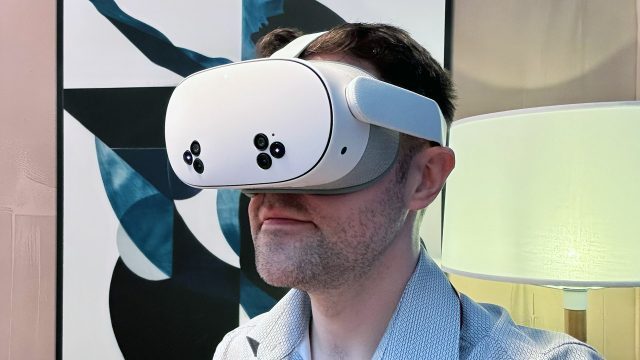
A major point of division between Quest 2 and Quest 3 was not just performance but the vast difference in mixed reality capabilities. Quest 2 has a grainy black & white mixed reality view with a resolution of just 4 pixels per-degree. Quest 3S on the other hand has a full-color mixed reality view with 18 pixels per-degree resolution—identical to Quest 3.
At the base level, the improved mixed reality view is a nice convenience, simply because when you put on the headset you have the option to look at the real world around you with reasonably good resolution. This makes a much nicer transition from putting on the headset and sliding into full VR, compared to feeling like you’re wearing a blindfold as soon as you put on the headset.
Mixed reality content on Quest today is mostly that—a convenience. Even when it comes to mixed reality apps, many are using mixed reality as a simple optional passthrough background or a small add-on mode. But there’s not yet a ‘must play’ mixed reality game.

But again, that’s in part because the Quest population is still so heavily weighted toward Quest 2. With its inferior mixed reality capabilities—but still significant share of the overall user population—it’s difficult for developers to justify going all-in on made-for-mixed reality apps.
Value Proposition
Starting at $300, Quest 3S has a real chance of changing that. It might be lacking some of Quest 3’s standout improvements, but it’s an incredibly good value for what’s being offered. In fact, even though they both launched with a $300 price point, Quest 3S is technically launching at an even lower price point than Quest 2 considering the inflation that’s happened in the last few years.
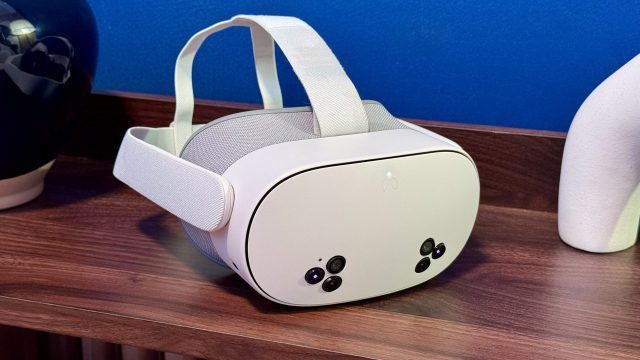
Not only has price come down, value has gone up as well—Horizon OS is still plenty flawed, but it’s much more capable than it was when Quest 2 launched. And the breadth and quality of content in the Horizon OS store has gone up too; those who are new to VR have a lengthy list of worthwhile content to dig into.
And there’s two other improvements over Quest 2. First, the Touch Plus controllers that come with 3S ditch the tracking rings, making them more compact and less likely to bump into each other. And second, Quest 3S has the exact same audio stack as Quest 3, meaning a nice bump in audio quality compared to Quest 2. Quest 3S also supports most of the same accessories as Quest 3.
– – — – –
At $300, Quest 3S is an unbeatable value as an entry-level headset, and an easy recommendation for brand new VR users or Quest 2 users that don’t want to be left behind.
,
